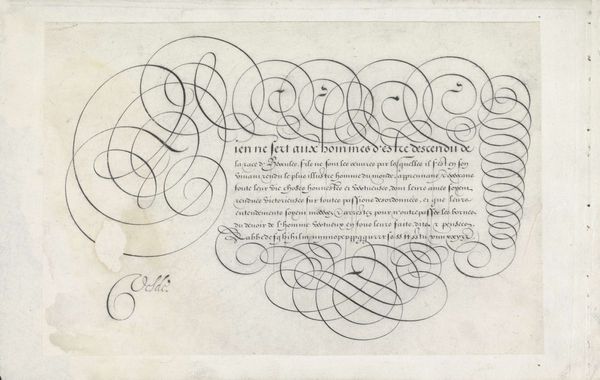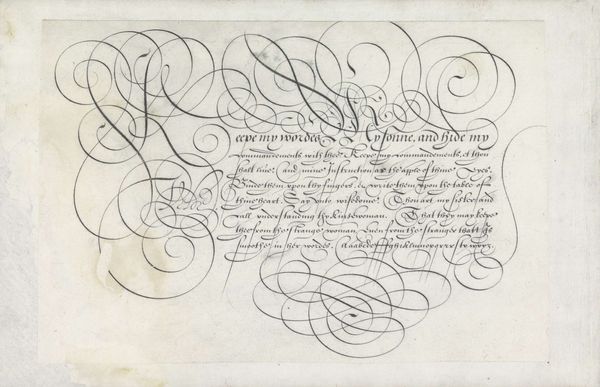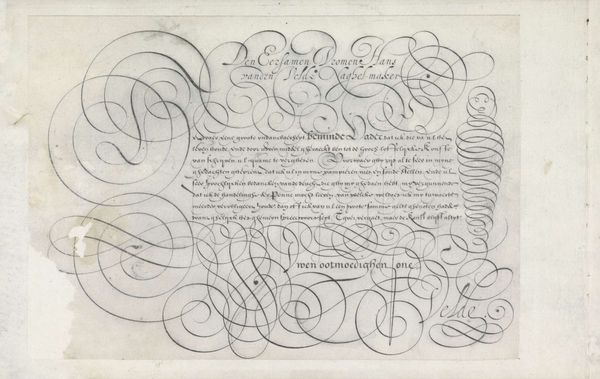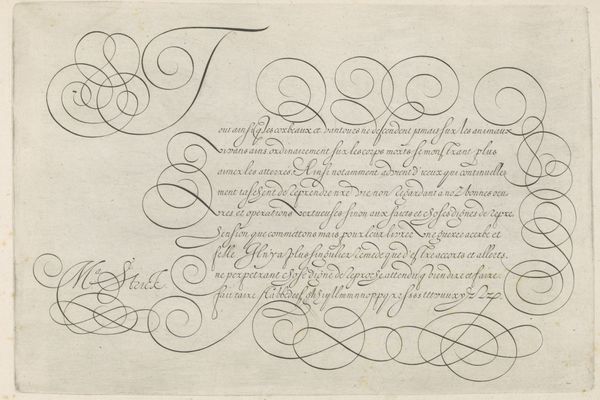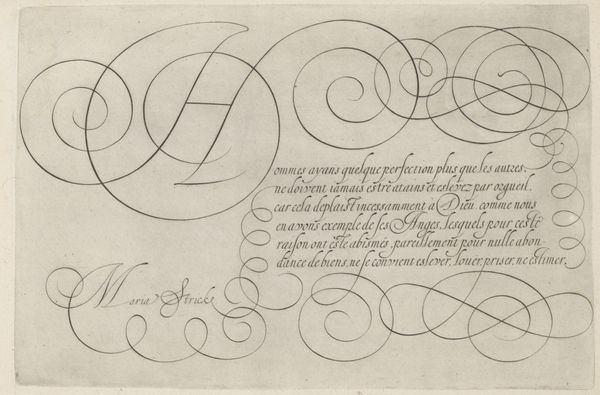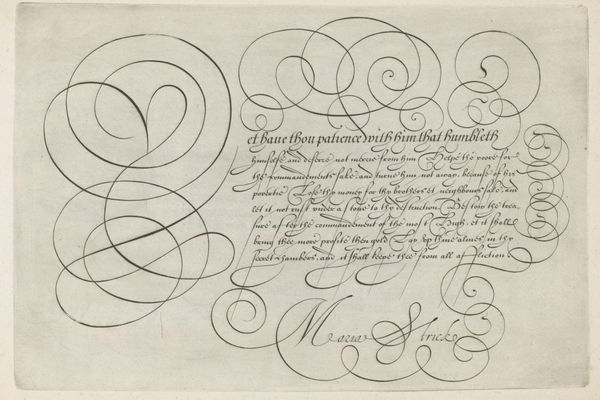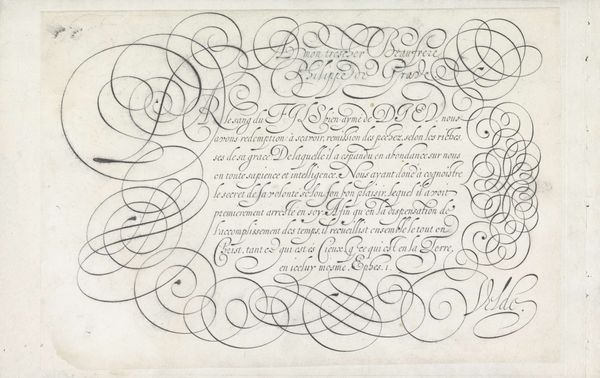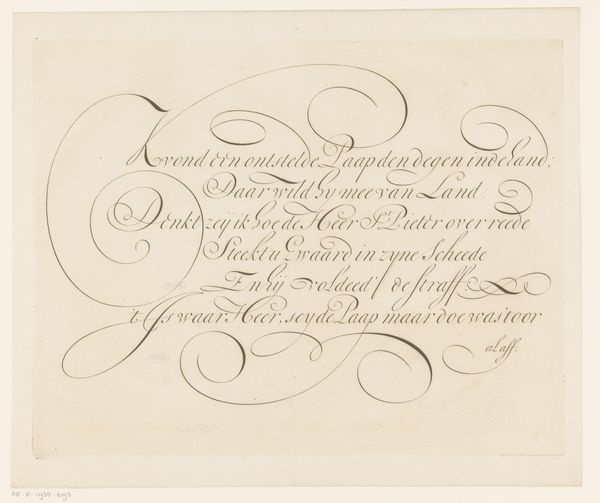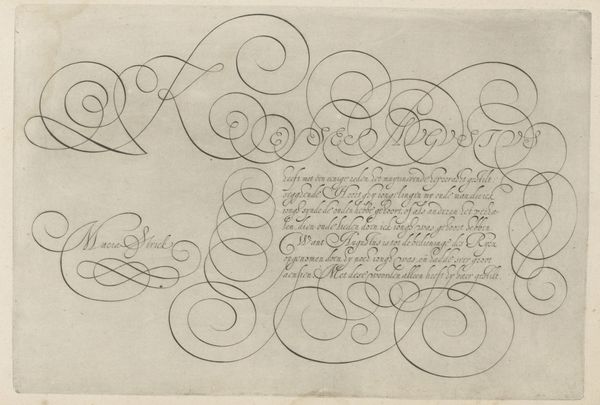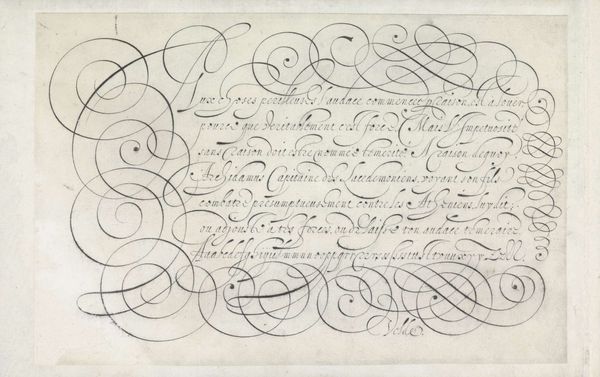
drawing, print, textile, paper, ink
#
portrait
#
drawing
#
type repetition
#
aged paper
#
medieval
#
parchment
# print
#
thick colouring
#
old engraving style
#
hand drawn type
#
textile
#
mannerism
#
paper
#
form
#
ink
#
old-timey
#
geometric
#
abstraction
#
line
#
history-painting
#
golden font
#
decorative-art
#
historical font
#
columned text
#
calligraphy
Dimensions: height 160 mm, width 225 mm
Copyright: Rijks Museum: Open Domain
Editor: Here we have "Schrijfvoorbeeld," a drawing in ink on paper by Maria Strick, dated 1611. It’s full of swirling calligraphy; a very formal and elaborate piece of penmanship. I'm curious, what stands out to you about this work? Curator: What interests me is how Strick's work operated within a very specific social context. Calligraphy, particularly for women in the 17th century, was tied to ideas of education, refinement, and even piety. Do you see how the act of writing, especially with this level of detail, becomes a performative act of skill and status? Editor: So, it's not just about the message, but also about showcasing the artist's capabilities and social standing. How would this drawing be perceived in its time? Curator: Exactly. Its reception would be shaped by the understanding that such skills were markers of a well-bred individual. Remember that access to education and artistic training was limited, and mastering calligraphy represented significant cultural capital. Editor: It’s fascinating how handwriting, now mostly replaced by typed text, once carried so much weight. So, the very act of making it created cultural meaning. I’m also curious about the verse itself. What’s the significance? Curator: Yes, handwriting as performance. The verse is fascinating! "Consider what you were, o Man, before Adam's fall" immediately places the viewer within a theological and historical narrative, likely Protestant. Strick seems to comment on a moral stance through the writing itself. Do you consider the relationship between the complexity of the lettering and the solemnness of the phrase? Editor: Yes! I initially saw the swirls as pure decoration, but understanding its cultural meaning, the elaborate style almost emphasizes the importance of the text, and warns the viewer. Curator: Precisely. It highlights how artistic expression becomes a public articulation of values, reflecting a complex interplay between aesthetics, religious belief, and social identity. Editor: It's so helpful to consider how historical and cultural context changes our perception of this image. I was just seeing a decorative lettering, not a symbol of socio-cultural values! Curator: It really highlights how even the simplest artwork can offer insights into the societal structures that shape artistic production. A calligraphic 'drawing' opens the book for cultural, class and religious views.
Comments
No comments
Be the first to comment and join the conversation on the ultimate creative platform.
